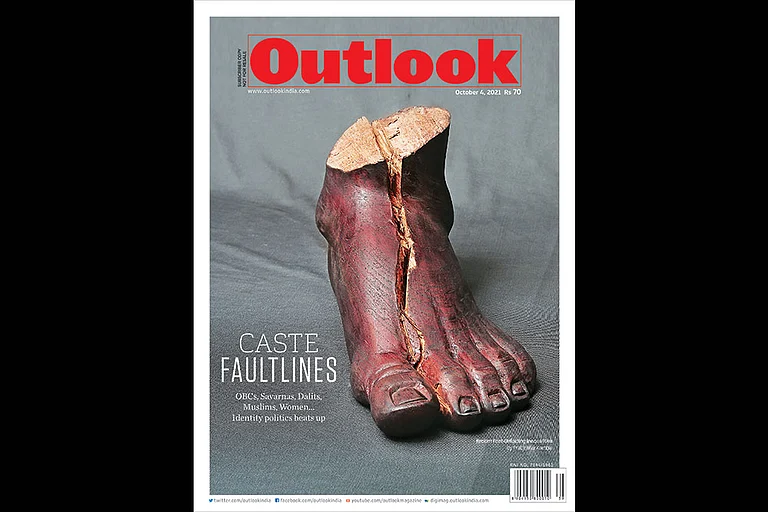Mycetoma is a chronic, progressive tropical infection caused by either fungi (eumycetoma) or bacteria (actinomycetoma). It typically enters the body through minor skin injuries—such as cuts or punctures—allowing environmental organisms to invade. The disease slowly advances, forming nodules, sinuses, and discharges containing distinctive “grains.”
Predominantly affecting poor and rural populations, Mycetoma remains severely under-reported and by the time diagnosis is made, the infection may require surgical removal or even limb amputation—robbing patients of mobility, independence, and dignity.
However, now, a landmark international study led by a global research consortium offers new hope for patients with mycetoma, shedding light on how the disease’s hallmark black grains, a fungal mass characteristic of the disease are formed. Until now, the process of grain formation has remained largely unknown.
The study holds importance for India too where despite being first identified in Madurai, India in 1842, the disease remains poorly understood and largely ignored.
The researchers confirm that iron—a common element in the human body—is being exploited by the disease-causing fungus. Using advanced histology, omics, and AI-powered analysis, the team led by Prof. Imad Abugessaisa from University of Osaka and Dr. Wendy van de Sande from Erasmus University Medical Center in the Netherlands found that the fungus uses siderophores, iron-scavenging molecules, to shield itself from both the immune system and antifungal drugs.
These protective “grains” allow the disease to thrive undetected—until it spreads to muscle, bone, and skin, says the study published in Nature Communications.
“The fungus can remain safely enclosed inside these grains—or burst out aggressively—depending on how much iron is available in the host,” warns the research team.
The implications are grave: current antifungal treatments are largely ineffective unless grain formation is disrupted. The study identifies iron metabolism as a promising new drug target.
Mycetoma typically afflicts young men aged 20–40, particularly farmers, herders, and daily wage workers in India, Sudan, Mexico, and other parts of Africa and Asia. In villages like Wad Onsa in Sudan, where prevalence is among the highest in the world, mycetoma leaves patients disabled, stigmatized, and financially ruined.
“There have been sporadic studies, but it continues to be under-reported,” said Dr. Kavita Singh of the Drugs for Neglected Diseases Initiative (DNDi). A non-profit organisation has been engaged in advocacy and developing drugs for the neglected diseases like Mycetoma in endemic countries like India.
The disease starts as a painless nodule but can silently spread over years, eventually leading to gross deformity and amputation. More than 70 different microorganisms can cause mycetoma, which is categorised into eumycetoma (fungal) and actinomycetoma (bacterial) forms.
The World Health Organization (WHO), which classified mycetoma as a Neglected Tropical Disease (NTD) in 2016, has warned again this month saying that “Little is known about the global incidence of mycetoma. Early signs go unnoticed, leading to progression that may result in amputation, disability, and profound socioeconomic burden.”
Patients often lose their ability to work, pushing families into deeper poverty. Yet, public health infrastructure in high-burden regions remains woefully inadequate, with limited diagnostic capabilities and virtually no targeted drugs, said Dr Kavita Singh.
“Mycetoma is most prevalent among men aged 20 to 50, particularly in agricultural occupations, with a male-to-female ratio of about 3:1,” said Dr. Shivaprakash M. Rudramurthy, Professor of Medical Mycology at PGIMER, Chandigarh. “In India, actinomycetoma are common in Rajasthan and the south, caused by organisms like Nocardia and Streptomyces while eumycetoma, caused by Madurella—are more common in parts of Rajasthan and central India.”
Cases are also emerging in eastern India. A study titled Clinical and Epidemiological Profile of Mycetoma Foot: Observations from Eastern India reported ten cases from Bihar and West Bengal, highlighting delayed diagnosis and the need for multidisciplinary treatment involving dermatologists, microbiologists, and surgeons.
While the breakthrough by scientists from RIKEN (Japan), Erasmus MC (Netherlands), Maynooth University (Ireland), and the Mycetoma Research Center (Sudan) offers hope, the path forward requires decisive political and health system intervention, feel the experts.
“This is not just a scientific milestone—it’s a wake-up call,” said Prof. Abugessaisa. “We need investment in early screening, education, and accessible antifungal treatments—now.”


























